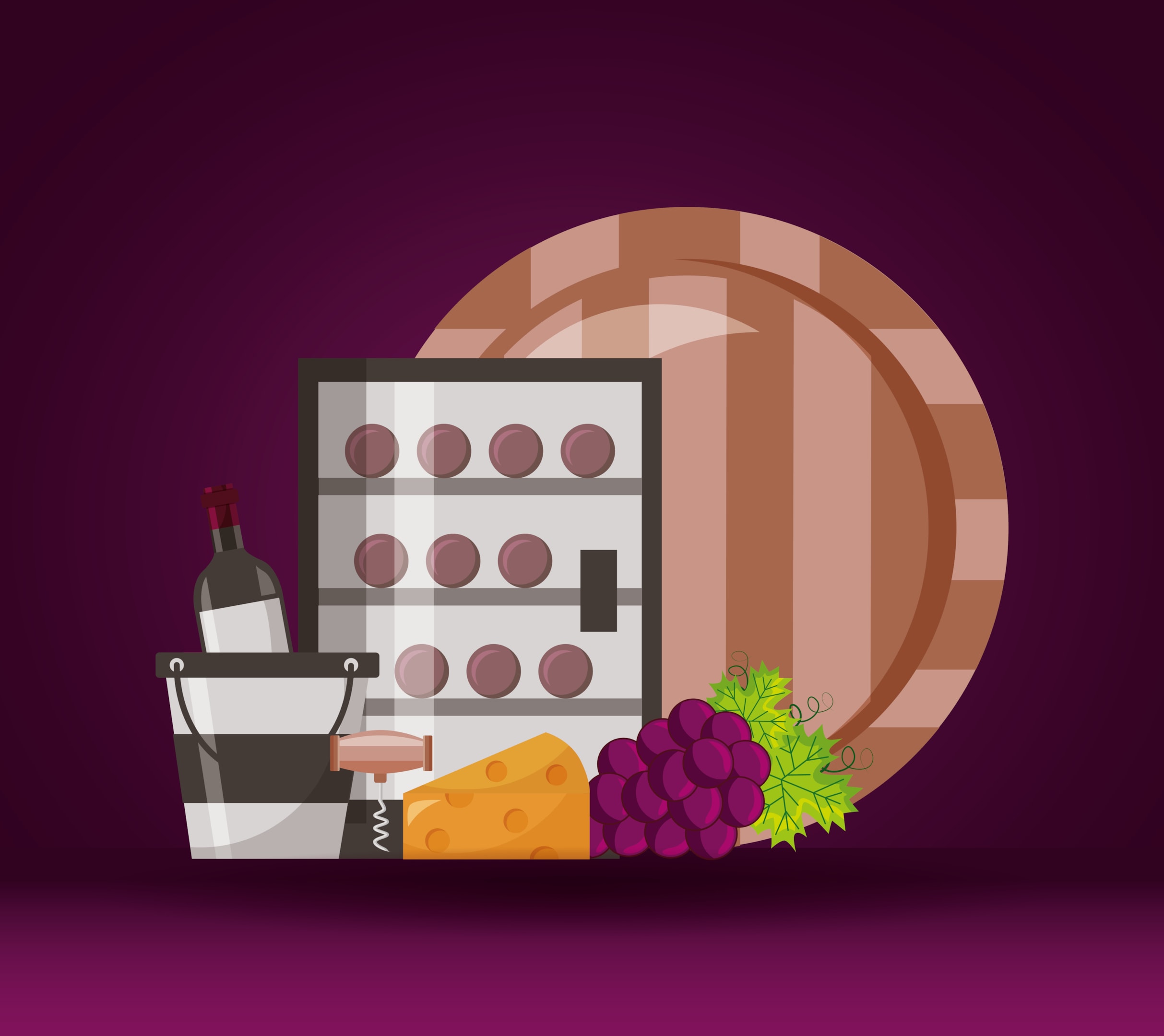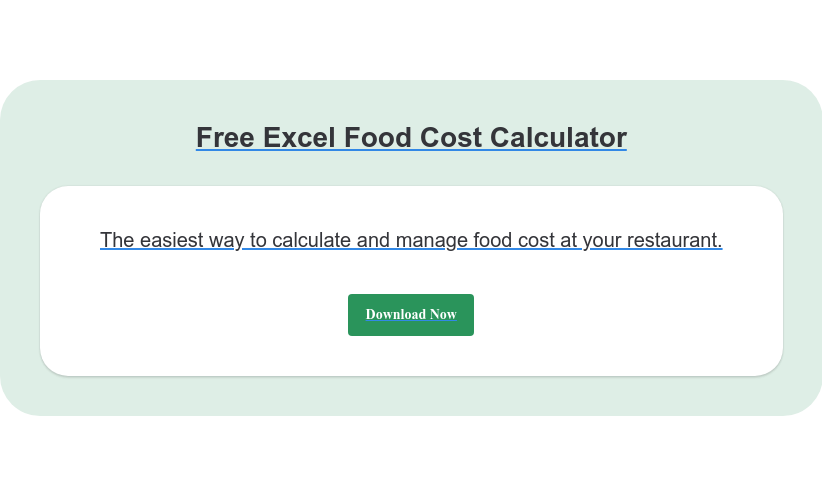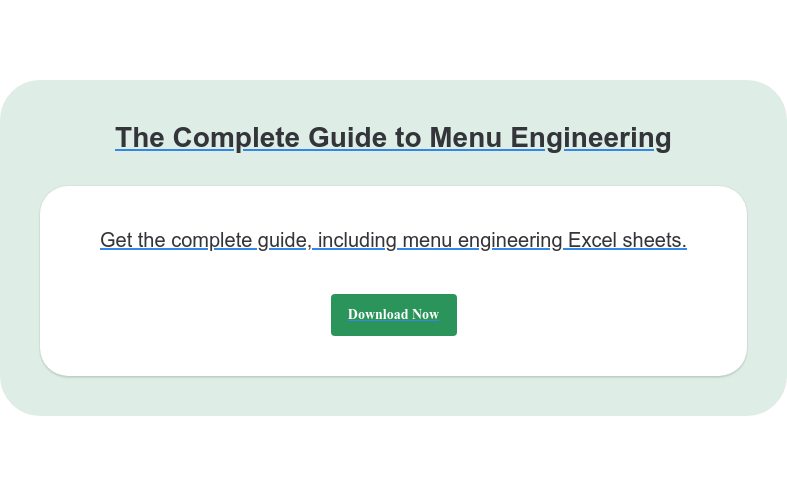If you don’t bring them under control, food costs can cripple your restaurant.
When the price of raw materials rises or the yield shrinks but the menu price remains the same, food cost increases. And while you can lower the portions and quantity of your dishes, both these options are makeshift strategies that can have a negative impact on your customer experience.
Fortunately, there are several other ways to get a handle on expenses.
First, let's have a look at why food cost calculation is crucial and how you can easily incorporate it into your restaurant operations.
Key Takeaways
The importance of controlling food costs in restaurant management is broken down into 4 parts:
-
Part 1: Menu engineering; analyze the menu to identify high and low-profit items
-
Part 2: Purchasing and inventory management; source ingredients from reputable suppliers at competitive prices
-
Part 3: Kitchen and cooking procedures; train staff on proper food preparation and handling.
-
Part 4: Waste reduction and cost analysis; conduct waste audits and analyze food cost data.
Food cost: why it's important
Any cost incurred by your restaurant on food is part of its food costs. It's highly important to employ time & resources for calculating accurate food costs as it helps you to gain an in-depth understanding of your restaurant's operations and the profitability of the dishes that you offer. This enables a restaurant owner/manager to undertake proper restaurant accounting and determine whether the restaurant is achieving the desired revenue goals or lagging behind, and establish the next steps accordingly.
If you are unaware of which dishes are helping you bring in the profits and which ones are taking your restaurant down, you will not be able to create an efficient & optimal plan for the future.
How to calculate food costs
Calculating Food Costs may seem like a complicated and tedious process as it involves a price breakdown of each of the ingredients. To help make this process easier for you, we have created a step-by-step guide and a free food cost calculator that can streamline the entire process.
Once you have calculated your food costs, it's important to understand how to optimize your restaurant for incurring minimum food costs.
Whether you’re running a quick-service restaurant or a fine dining establishment, here are 10 steps you can take to help control food costs.

1. Sales forecasting
Often neglected by restaurant owners/managers, sales forecasting is a crucial part of organizing your restaurant and minimizing food costs.
Sales forecasting includes gaining an insight into your past sales to identify patterns and predict future sales for your restaurant. This helps in better management of overall operations including procurement of ingredients, food prep, staff scheduling, etc., which eventually leads to lower wastage of food and reduced food costs.
Although not completely accurate, sales forecasting can help a restaurant predict their upcoming sales significantly, especially during seasonal events like Christmas and Valentine's Day when sales are likely to go up for fine-dining restaurants as well as off-peak seasons like summer holidays where sales are likely to plummet for outdoor restaurants.
Keeping track of these patterns can help you plan better and minimize food costs significantly.
2. Be mindful of portion sizes
Portion sizes play a huge role in increasing your food costs. It's important to serve the right amount of food to your customers. Keep track of the plates when they come back to the kitchen to see if a lot of them come back with a large amount of leftover food, or if there are increased requests for takeaway containers. If you notice either of these things happening, there is a good chance that the portions your restaurant offers are oversized and can be reduced to an extent.
Employing menu engineering can also help create the right dishes and portions for your market.
Another aspect of portion sizes that needs attention is ensuring that the entire staff is well-trained about the determined portion sizes for each of the dishes so that they send out exactly the correct measured amount. This is crucial because even a minor difference in the portions can significantly raise your food costs and mess up your food ordering system. For example, if each portion of a salmon fillet is meant to be exactly 4 ounces but a few portions go out at 4.2-4.3 ounces, it will lead to an increased order amount & cost for salmon down the line.
3. Join a cooperative
A cooperative is a purchasing group that gives independent restaurants and regional operations buying ability similar to the mega-chains.
Whether you’re buying fruits, vegetables, or meat, when you buy in bulk, you always get a good price and better service.
So if you don’t have the purchasing power to compete with chains that have massive negotiation options and buying power, consider joining a cooperative around or within your geographical region.
4. Conduct weekly inventory checks
Regular checks of your inventory can give you an idea of what items your kitchen consumes the most, and what you need to stop ordering.
For instance, if you notice that you have cheese that is spoiling and going unused, change your order to a lesser quantity to minimize food waste.
Conversely, knowing what supplies are being ordered routinely will enable you to order the precise amount at the right interval from your supplier.
You can do all of this manually or automate the process by using appropriate restaurant management software.

5. Bring new vendors on board
There are new vendors popping up on the scene all the time. Keep an eye on them and get quotes when your existing contracts are up for renewal.
Even if you want to stick with your existing supplier, having contact with their competitors will help you to negotiate a better price for your food supplies.
Another option is to work with local growers and buy organic produce. Not only will you know how your food is grown and where it comes from, but you can also stay in close contact with the producer.
6. Prep wherever you can
If you’re willing to go the extra mile, you could potentially reduce food costs by thousands - and minimize wastage at the same time.
Instead of buying pre-peeled or sliced fruit, ask suppliers for their full-skin option. Don’t buy fillets of chicken, ask your staff to prep boned chicken instead.
Prepping supplies like this will enable you to control your food cost and maximize stock use. Bones can be used to make broth, for instance, which then removes further your need to buy ready-made packets.

7. Reduce waste
Keeping food costs under control is also reliant on waste reduction. Achieving this can be as easy as training your wait staff to serve accurate orders.
For example, if a customer returns food because it was not made according to their preferences, the meal is wasted. The chances of this happening will be low when you equip your staff with the resources they need to ensure the order is accurate the first time.
Restaurant reservation software tops the list, as it can be used to track guests’ preferences for better personalization and hospitality.
Another key benefit of using software is the ability to forecast a user’s food production schedule based on customer demand.
For example, preparing a pot of tea in the evening might lead to a lot of wasted tea, as demand is higher in the mornings. Using software can help the person in charge take note of these patterns and prep for different days and shifts.
8. Measure and weigh
Whatever supplies you’ve ordered for your kitchen need to be measured and weighed to ensure that the right amount of produce has been delivered.
For instance, if there’s only 4.5 kg of sugar in a 5 kg pack, it would result in higher food costs. In fact, pack measurement is an area where maximum discrepancies occur. Talk to any restaurant manager and they’ll tell you that they remember the time when a kilogram of food pack actually had a kilogram of stock inside.
To control food costs, the purchasing team should make sure that all supplies are being delivered in the right quality and amount.
9. Get organized
It’s no secret that restaurants operate in a fast-paced industry. Whether it’s lunch hour or dinner time, activities in most restaurants happen throughout the day. Hence, keeping the establishment organized may feel overwhelming.
However, it can play a crucial part in reducing your food spoilage because essential supplies are less likely to slip through the cracks.
So, take some time to develop an organized system for your kitchen. When things are easier to find, it’ll take the stress out of the guest rush and lower your costs.

10. Use menu engineering
Menu engineering involves taking proactive measures to identify the strengths and weaknesses of your menu and making changes as needed.
This kind of insight will help you identify your top performers or the dishes that lack both in profitability and popularity. Removing these items or replacing them with new, lower-cost dishes can drive up your revenue.
If your point-of-sale system comes with menu engineering and inventory management features, use that to your advantage! Alternatively, use this free menu engineering Excel worksheet to set up a well-engineered menu at your restaurant.
11. Know your grades
Smart restaurants make sure that their purchasing department is familiar with food grades. In several countries around the world, food is sorted into grades based on its appearance, quality, and freshness.
In many instances, the differences between grades are entirely cosmetic. For example, there’s a minor difference between grade 2 and grade 1 tomatoes, so you can order the former to lower your costs without compromising taste.
Ask yourself, do you really need grade 1 for every meal? If a food item isn’t going to be served in its original state, you don’t need to buy the top grade. A grade 2 avocado will taste and look as good smashed up in a cup as a grade 1 – but it’ll significantly lower your food cost.
12. Leverage daily specials
Used correctly, daily specials can help to reduce the waste (and consequently food costs) in your restaurant.
When you identify food that has been in your supply room for a while, think of a recipe that uses or features that item, and place it on your daily specials menu.
Coordinate with your front staff to encourage guests to try out the daily special. If all goes well, you’d be able to eliminate waste while also enjoying a profit.
Conclusion
Controlling food waste and cost is key to keeping your dream of running a successful restaurant alive.
As you implement the above-mentioned steps, you’ll find that certain practices can have a profound impact on your restaurant’s bottom line and prevent waste for years to come.
The ideal food cost should be between 28%-35%, however, this could vary based on the type and size of the restaurant.
Use our food cost calculator to find your ideal percentage and take cost control measures when your numbers cross the standard range.















-1.png?width=1812&height=1072&name=TripAdvisor%20%26%20More%20Bookings%20(1)-1.png)
-2.png?width=1812&height=1072&name=Google%20Bookings%20(1)-2.png)


-1.png?width=200&name=TripAdvisor%20%26%20More%20Bookings%20(1)-1.png)
-2.png?width=200&name=Google%20Bookings%20(1)-2.png)
-1.png?width=200&name=Instagram%20Bookings%20(1)-1.png)
-1-png.webp?width=200&name=Facebook%20Integration%20Rectangle%20(1)-1-png.webp)







.webp?width=200&name=download%20(1).webp)
%20(1)-2.webp?width=200&name=Eat%20(34)%20(1)-2.webp)
%20(1)-2.webp?width=200&name=Eat%20(18)%20(1)-2.webp)










.webp?width=314&height=175&name=Chit%20Printer%20Banner%20(8).webp)



.webp?width=144&height=72&name=Eat%20App%20Logo%20(3).webp)